Fighting for the Future: How the Instagram Generation Are Renewing the UK Climate Movement
by Charlotte England & Clare Hymer
12 April 2019
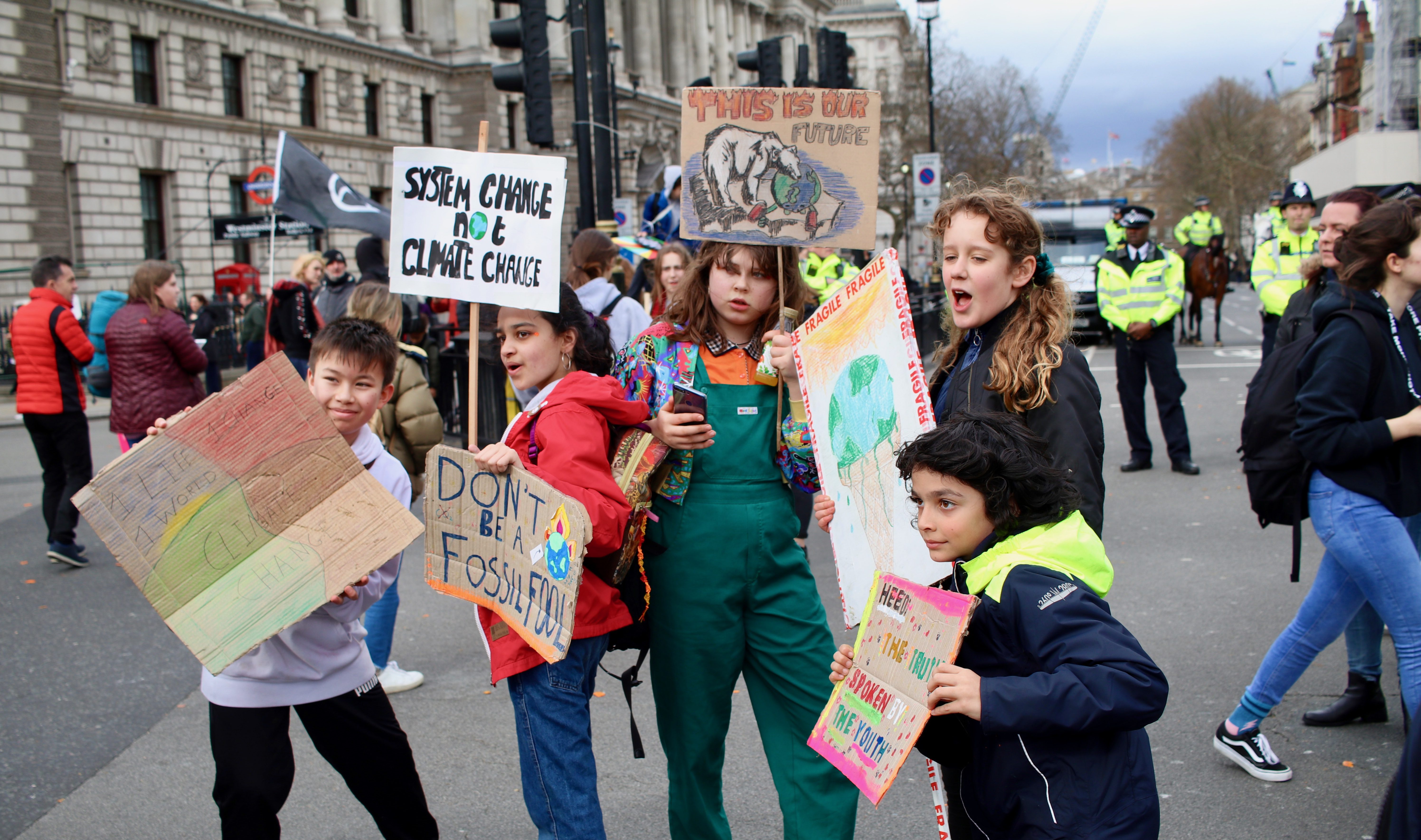
An estimated 50,000 schoolchildren in more than 150 towns and cities up and down the UK took part in a ‘youth climate strike’ on 15 March – more than three times the 15,000 who walked out of school the month before. Worldwide, organisers claim more than one million young people took part in climate strikes on the same day. Youth groups say the next strike, on 12 April, will grow and change again into something bigger and bolder than the one before, as organisers officially come out in support of a Green New Deal for the UK.
The strikes so far have been both vast and disparate: from teenage organisers speaking eloquently about the imperative to act now against total climate breakdown, to 13-year-olds skipping school to sing about Jeremy Corbyn and swear about the Tories, to half a dozen young people arrested for blocking Westminster Bridge and many hundreds more shouting, dancing, drinking and smoking in the streets around Parliament Square. It is impossible not to be impressed by the scale of the movement – but it’s also very difficult to make sense of it. Has it really come out of nowhere? How? And what might happen next?
February
For 15-year-old Scarlet Possnett – part of a core group of early organisers that has now spread into a web-like national network – it started with a single Instagram message, sent a few weeks before the first strike. Speaking to Novara Media in early March, Possnett, from near Cambridge, said she had been following what 16-year-old environment activist Greta Thunberg was doing in Sweden when she found the Instagram page of the UK branch of the Student Climate Network (UKSCN) two days after it was set up. She contacted the group asking how she could help and was invited to join one of their first online public meetings in January. When they delegated jobs she couldn’t decide what she wanted to do, so she signed up for “everything” and became “super involved all of a sudden”.
Possnett says there were about fifteen people in that meeting, but she estimates only five were teenagers. She misspeaks and says the ten or so adults in the room were from environmental direct action group Extinction Rebellion (XR), before correcting herself to say she thinks most were concerned parents. The idea was simple from the start: to call a strike across the UK on 15 February, and then to take it from there.
It was always crucial to the group that it be youth-led, Possnett says – giving a voice to “those of us who are completely ignored” because they don’t have the right to vote. But at first external support from members of XR and the UK Youth Climate Coalition (UKYCC) – a group for 18-29 year-old climate activists – was necessary to help the teenagers establish themselves. “Then more and more young people came,” Possnett says, “and the people who had been helping us get started stepped back and became a lot less involved”. While the established activist and environment groups offered advice, the final decisions about key issues, like whether or not to communicate with the police, “were completely made by 15-18 year olds”, Possnett says.
Jake Woodier, a UKYCC organiser who has been helping the strikers with their press operation (and one of the few adults not to have been phased out of organising structures over the past few weeks), explains that in addition to the small central group that Possnett is part of, there are groups all over the country that organise fairly autonomously. When people contact the national group, they are usually told to channel their energy into local organising. Cardiff sixth former Beth Irving says this is what happened to her. “I found out that there was one [strike] in London on Facebook because my brother sent me a link saying ‘look at this, maybe you want to get involved’”, the 17-year-old explains, over the phone. “I saw it was part of a UK-wide thing, and so I contacted them and asked if them if there was one in or near Cardiff, and they said no. So I organised one.”
Irving became part of a large social media network. For internal communication the strikers use platforms most adult organisers are familiar with: WhatsApp for coordination, and Zoom for calls. But when it comes to outreach and mobilising, beyond an email database their strategy is very different. While they set up Facebook events for the strikes, they don’t get many people saying they are attending compared to the number that actually show up on the day. “Facebook is quite a big thing for people who are a couple of years older than us, but most people my age don’t use Facebook”, Irving explains. Possnett agrees. “We mostly focus on Instagram, just because that’s the social media that my generation definitely uses the most,” she says, adding that the group got a lot of new followers by asking for shout outs from GCSE meme pages.
Woodier sees the way the strikers have organised through social media as key to how quickly the strikes have caught on. “[Social media] provides a platform for young people to engage in politics in the way they want to,” he says, “rather than being held back by the traditional [methods] – going to stale meetings, often having their voices drowned out – it’s a platform on which they’re comfortable and have free access to talk to peers all around the country.”
2,000+ kids at the Brighton youth #ClimateStrike are shutting down the centre of town to the sound of ‘Oh Jeremy Corbyn’ pic.twitter.com/mf6vTyldYG
— Callum Cant (@CallumCant1) March 15, 2019
But while the strike organisers’ social media operation may be slick, coordinated and professional, the strikes themselves have been anything but. Children in Brighton perhaps set the tone of the first strike in February when they were videoed pouring down the hill from the city’s main station chanting “Fuck Theresa May!” and “Tories, Tories, Tories, out, out, out!”
For Callum Cant, a community organiser who’s been helping facilitate the strikes in Brighton, there was a clear class distinction between the attendees at the February strike in the seaside city. “There’s a gap between the people who do the official sanctioned organising stuff, who have the megaphones and the banners, and the large groups of kids roaming out of school”, he explains. “The organisers of the strikes are largely white and middle class, but the kids who walk out of school on the day come from a much broader range of backgrounds.”
For Cant, this distinction was quite visible. “When you look at the demo, you can see who’s wearing their ties around their heads, and who’s wearing ‘I’m an eco-warrior for the day’ clothing. That reflects a class distinction.”
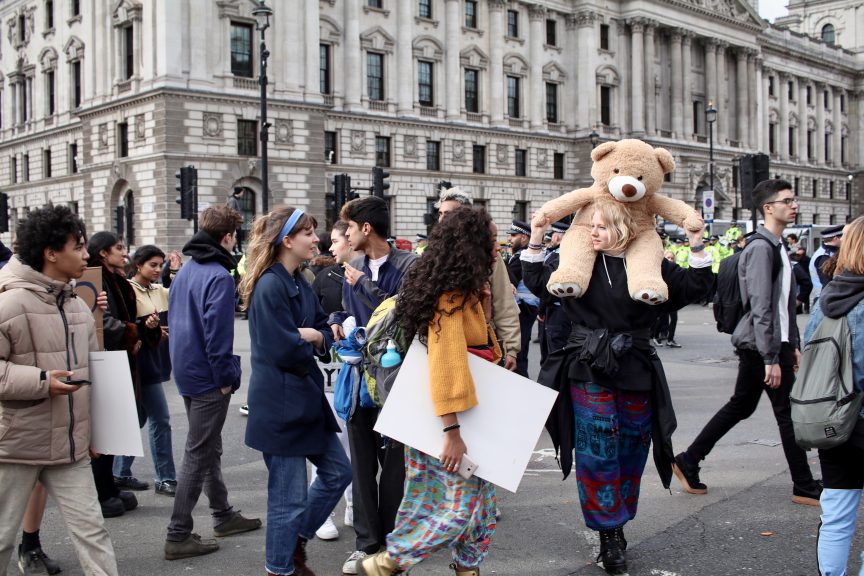
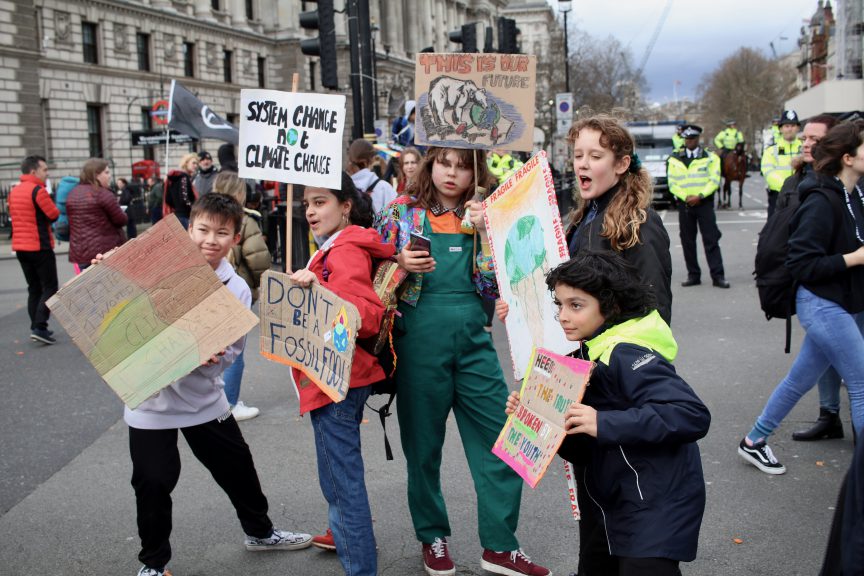
Woodier acknowledges that although there are young people from a variety of different backgrounds involved in UKSCN organising, “kids who come from better off backgrounds or go to more prestigious schools probably do find it easier to engage.”
This isn’t just because of the way the strikes are organised. Woodier has heard reports of state schools punishing students for skipping class – sometimes even fining their parents – while private schools often let students with good attendance or good grades participate in the walkouts, as if they’re an approved extracurricular activity.
“If this movement is to be successful it can’t just fall into the trap of age old environmentalism where it’s primarily been the domain of fairly wealthy middle class white people,” Woodier says, adding that he is “fairly confident” there are conversations happening among organisers “to ensure the movement is broad and diverse and not in a tokenistic way”.
Importantly, in Cant’s view, it wasn’t the organisers of the Brighton strike that initiated the political chants – clips of which went viral on social media in its aftermath. “The line that ‘this is apolitical, we shouldn’t be saying ‘fuck the Tories’ etc’ comes from the organisers. It was the kids in school uniform who were clearly pushing a more ‘fuck the Tories’, aggressive political line.”
The schools must be empty! Over 800 kids out of class for the Brighon #ClimateStrike pic.twitter.com/5IDhQxOXpX
— Callum Cant (@CallumCant1) February 15, 2019
At the London strike last month, the mood was just as chaotic – and equally jubilant. Absent of clear leadership, groups of young people marched (or rather, ran) in their hundreds between the capital’s major landmarks, across the lawns in front of Buckingham Palace, weaving around police lines, and setting off flares outside the Department of Business, Energy and Industrial Strategy.
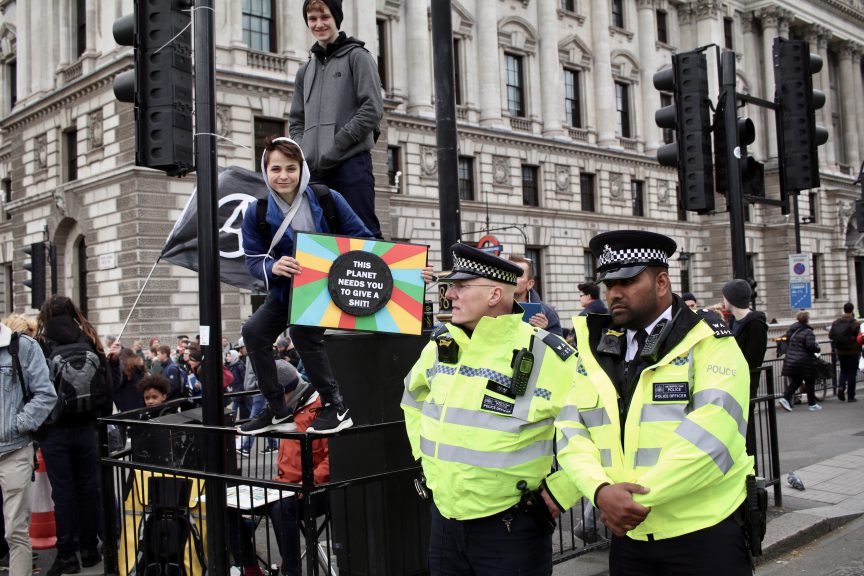
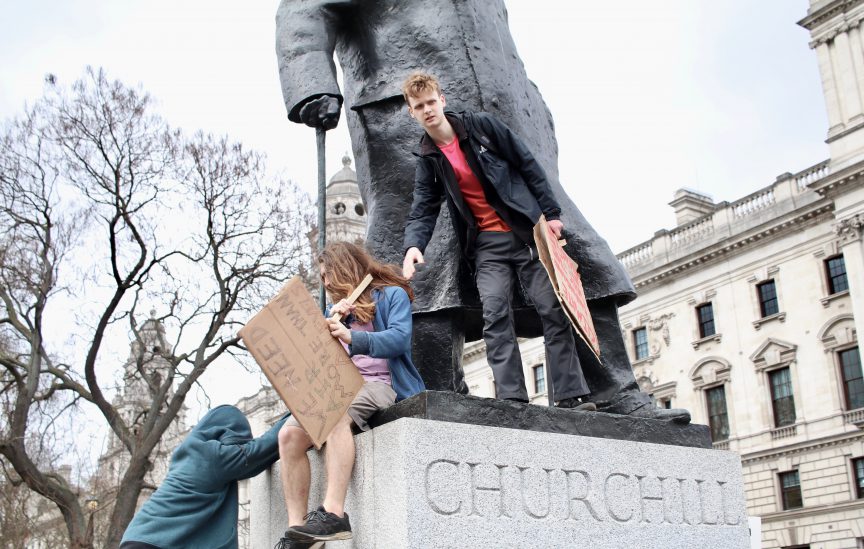
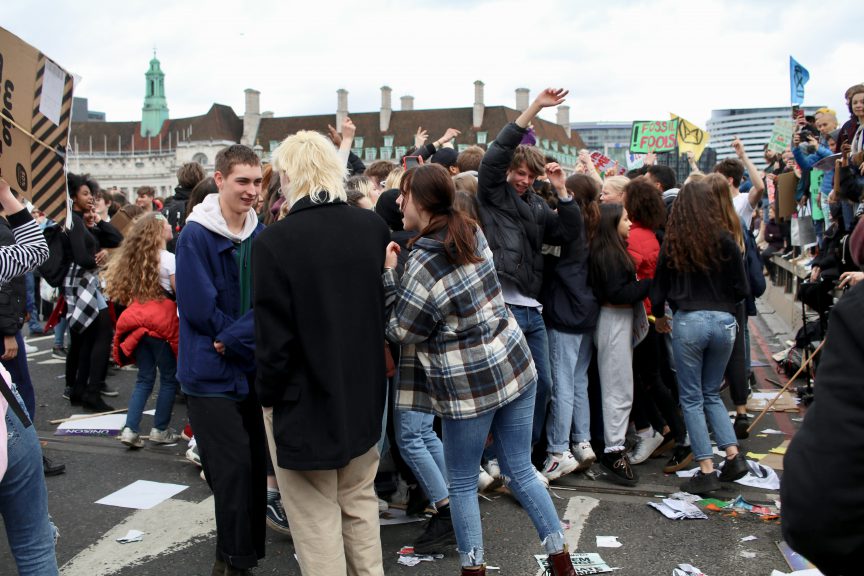
For some, the enemy was clear. A dominating chant on this occasion was: “one, two, three, four, Theresa May’s a fucking whore!”, while one striker, 17-year-old Clem Marshall, shouted “Michael Gove is this way” while frustratedly trying to direct an unruly group of protesters towards the Department for Environment, Food & Rural Affairs (with little success). When asked why, he spoke unequivocally: “Michael Gove is the minister for the environment, and he’s done fucking jack shit to stop the destruction of our planet”. For others, the appeal of the strike is much more vague. 14-year-old Jackson was just one of many young people who said gleefully that he came to the strike because he “wanted to miss school”.
As the main demonstration died down at around 4pm, most children went home, or fragmented into scattered groupings more interested in dancing, drinking and having a day off school than challenging the Met Police as they tried to curtail the march. In Parliament Square the remaining children took turns addressing the crowd, telling people what lessons they were missing and urging them to take actions that were often small and individualistic and on their own don’t look likely to save the world: pick up your litter, leave the square clean, don’t wear brands. While expected and age appropriate, this was very different to the key messages of the organisers.
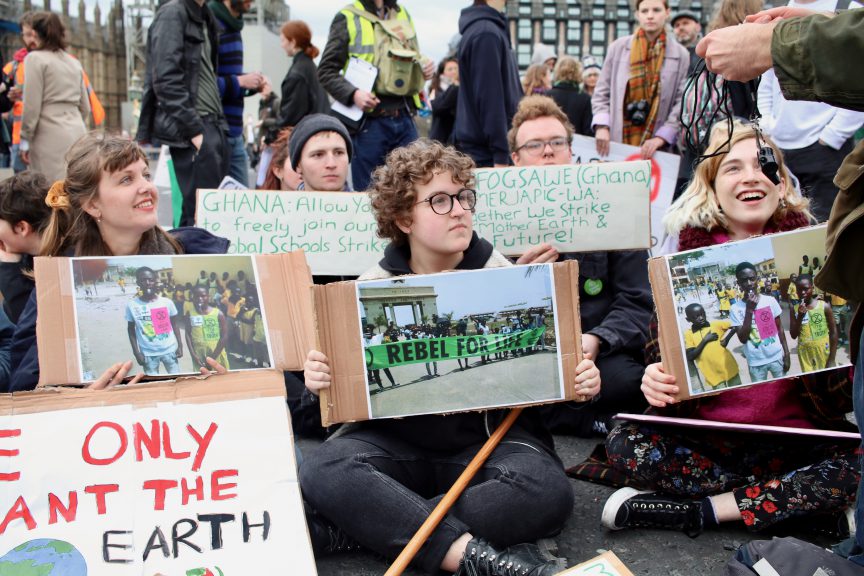
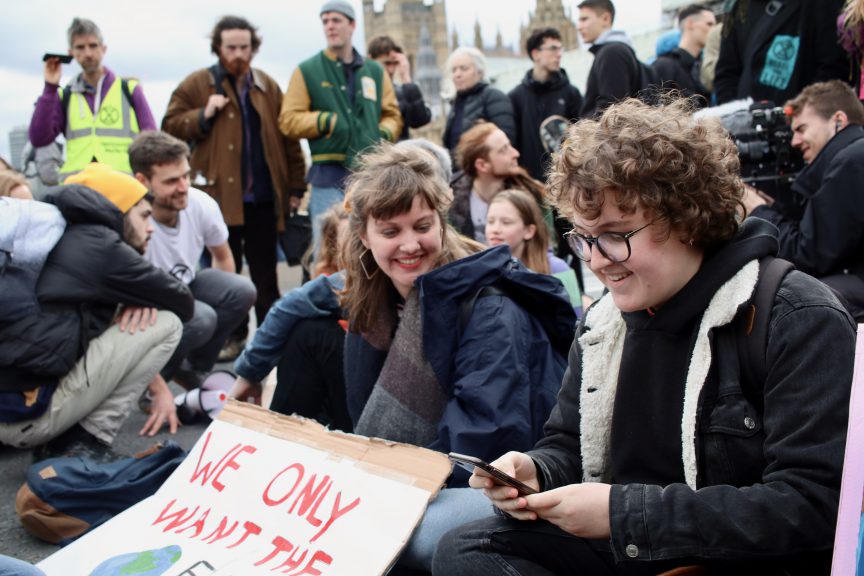
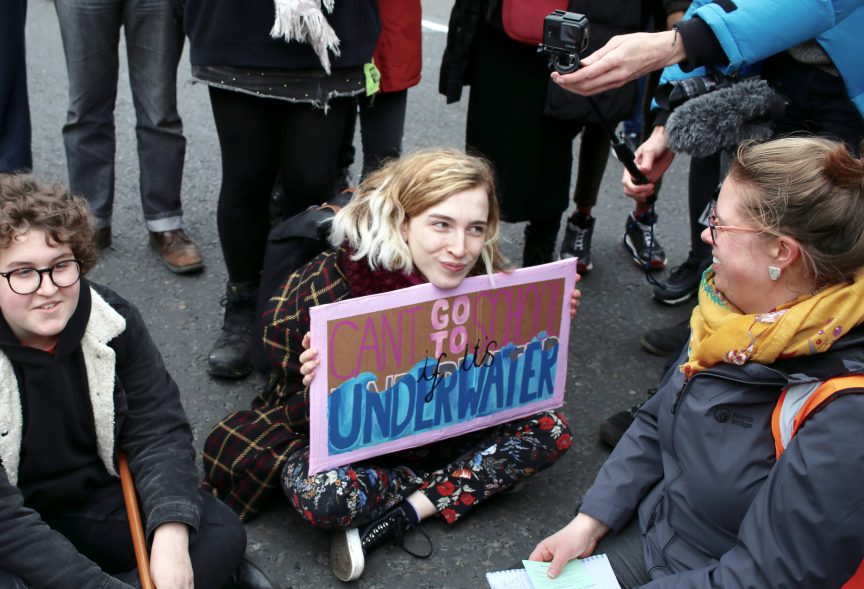
When the police cleared Westminster Bridge, just half a dozen stayed to be arrested, with support from a few helpful or opportunistic – depending on how you look at it – members of XR. Cass, a 17-year-old from Hammersmith, was somewhat scathing of the majority of protesters, who chose not to take radical action. “People need to be arrested for the cause,” she said. “If you look at how big changes were made – like the women’s rights movement, the gay liberation movement – these were done by protests where arrests were made and people had to be out there pushing.” While Cass ultimately decided to move rather than be arrested, at least half a dozen others were taken away in police vans.
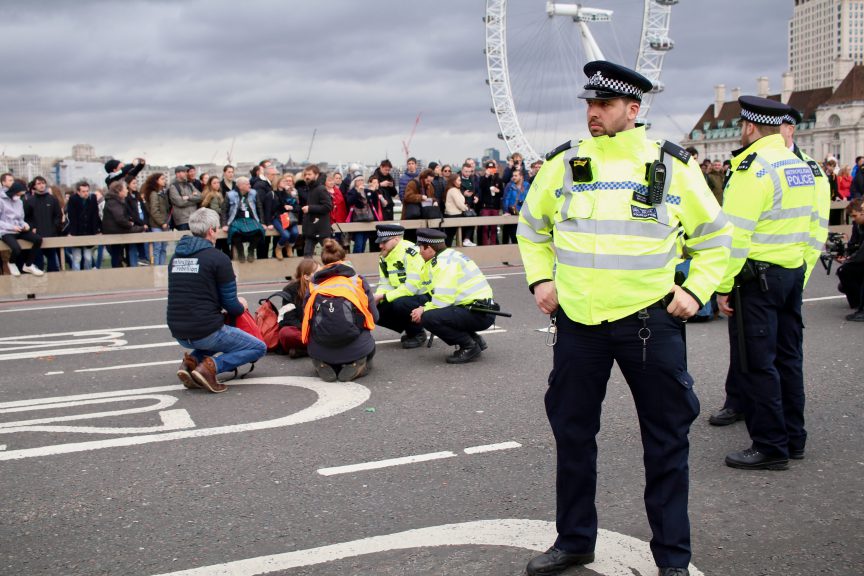
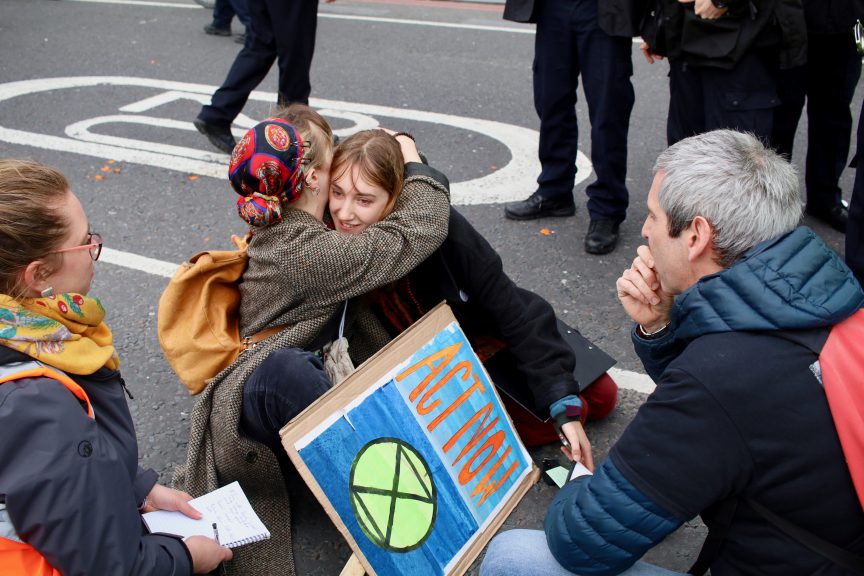
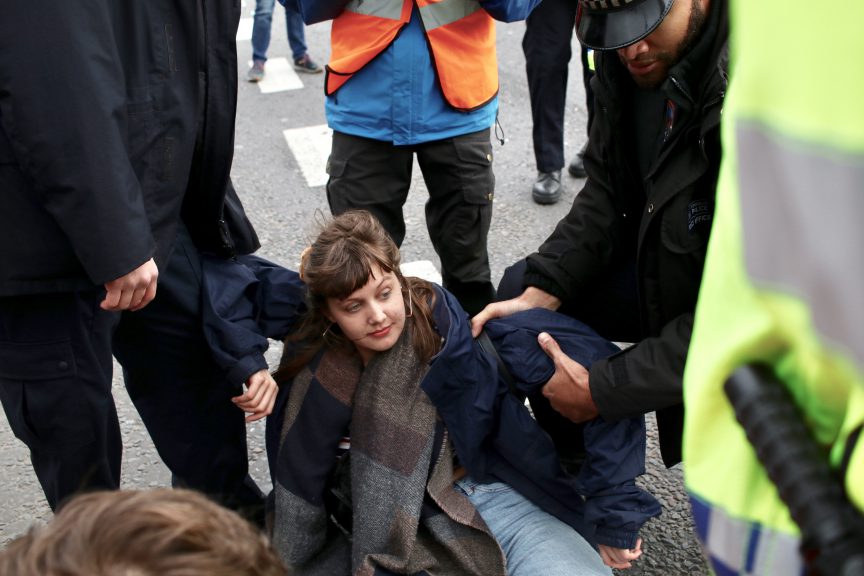
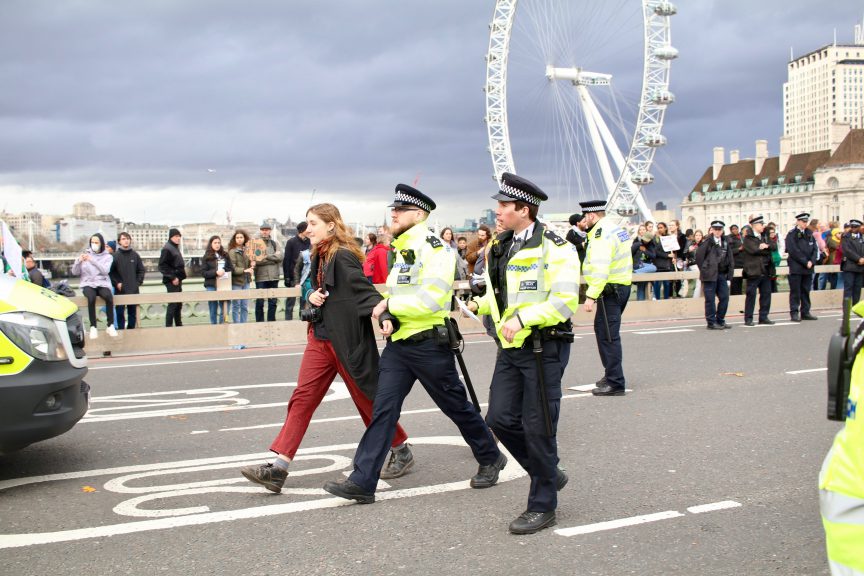
Looking forward, Possnett is clear that the organisers’ strategy isn’t just to repeat the same performance month after month. “We want to do something different every time we strike. So the first time it was just UK-wide, the second time it was international and next time it will be even bigger and bolder.”
For the April strike, the plan is to bring viable and just alternatives to climate breakdown into the discussion. Until now, the organisers’ demands have been vague, largely based around young people, education and communicating the scale of the crisis. This time they’re more propositional and solutions-focused, joining a growing number of groups calling for a Green New Deal for the UK.
For the youth strikers, what this means is really quite simple. “We want good and well paid green jobs, a healthy planet and a future to look forward to”, says 17-year-old Anna Taylor, a co-founder of the UKSCN. The focus on social justice is also notable, with 16-year-old organiser George Bond saying that a Green New Deal “would go a long way toward addressing the economic inequality that has disproportionately affected so many communities and regions around the UK”, as well as tackling climate change.
Maintaining independence from the world of party politics, however, is seen by the strikers as key to maintaining the legitimacy they’ve built up in recent weeks. Last month the organisers released a statement on “the political, non party-political nature of the youth climate movement”, clarifying that they don’t want any party – irrespective of its politics – to hijack the strikes to push its own agenda. But with different opposition parties moving into the space transatlantic grassroots movements pushing for a Green New Deal are creating – particularly Labour, and of course the Greens – how this distanciation works out remains to be seen.
But regardless of this, there’s an overwhelming sense that a whole generation is being politicised. Woodier sees school children who didn’t previously have entrenched political opinions forging a space where they can learn about politics. “It can be a very educational and transformative experience to be part of it,” he says. “Traditional methods of political and civil engagement aren’t working [anymore]. I think that’s why this is so unprecedented. We’re seeing thousands of children and young people coming out to fight for their very future.”
Charlotte England is head of articles at Novara Media.
Clare Hymer is a commissioning editor at Novara Media.